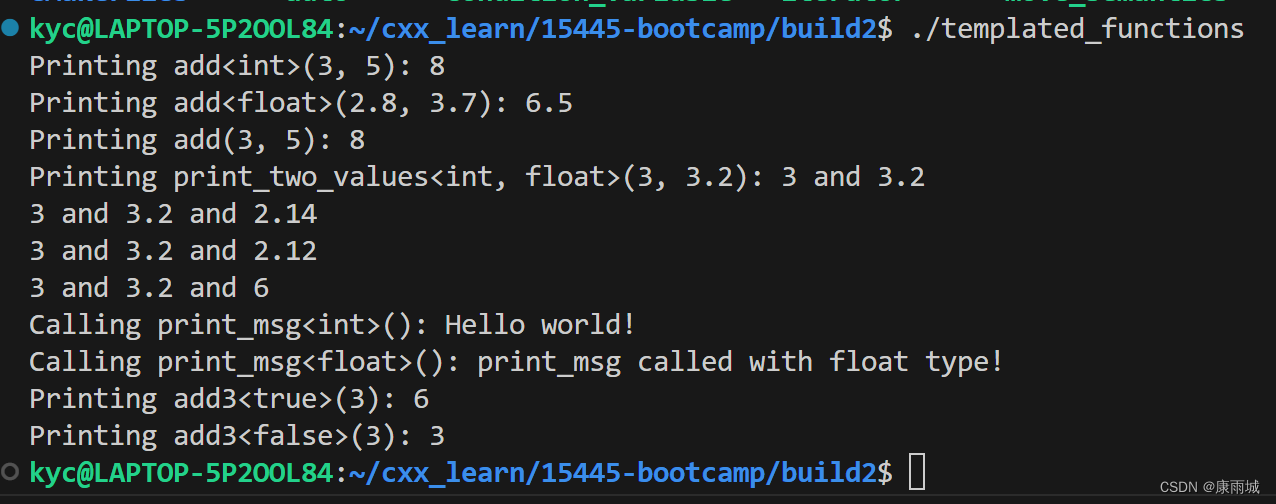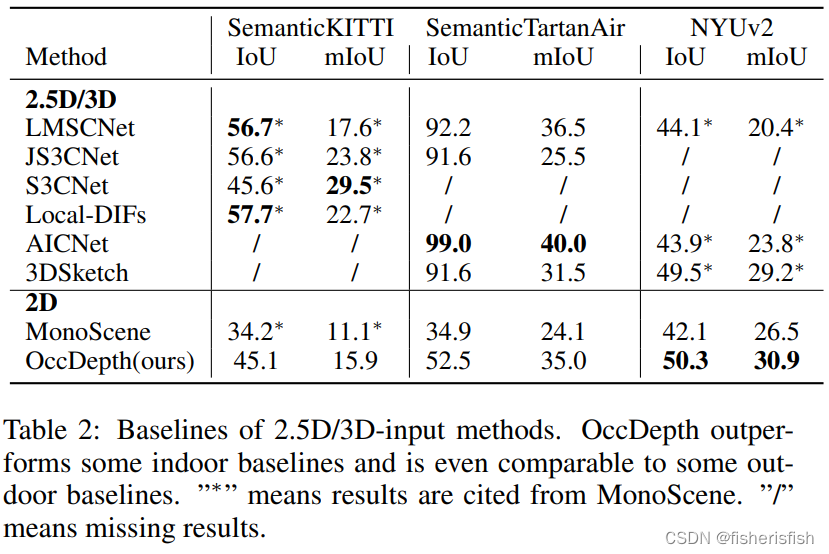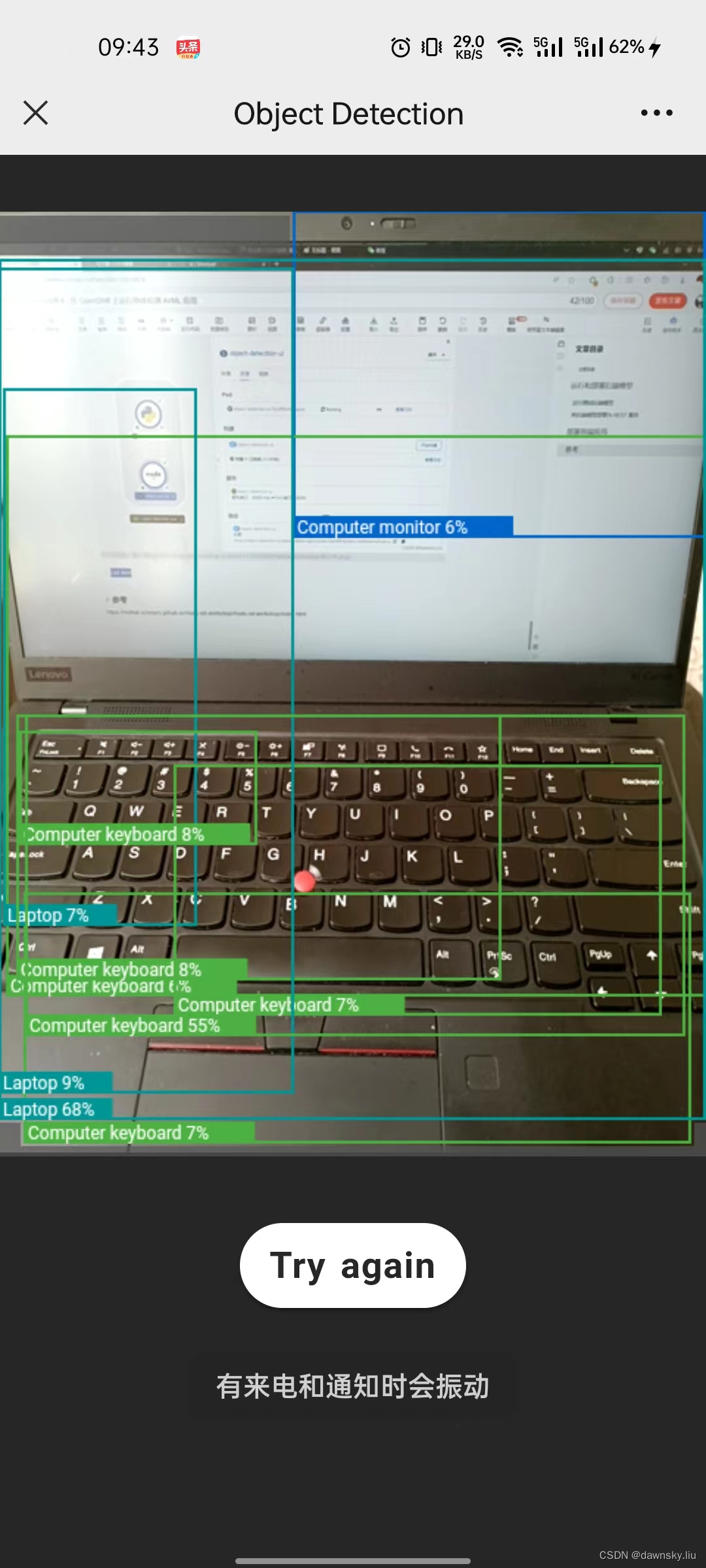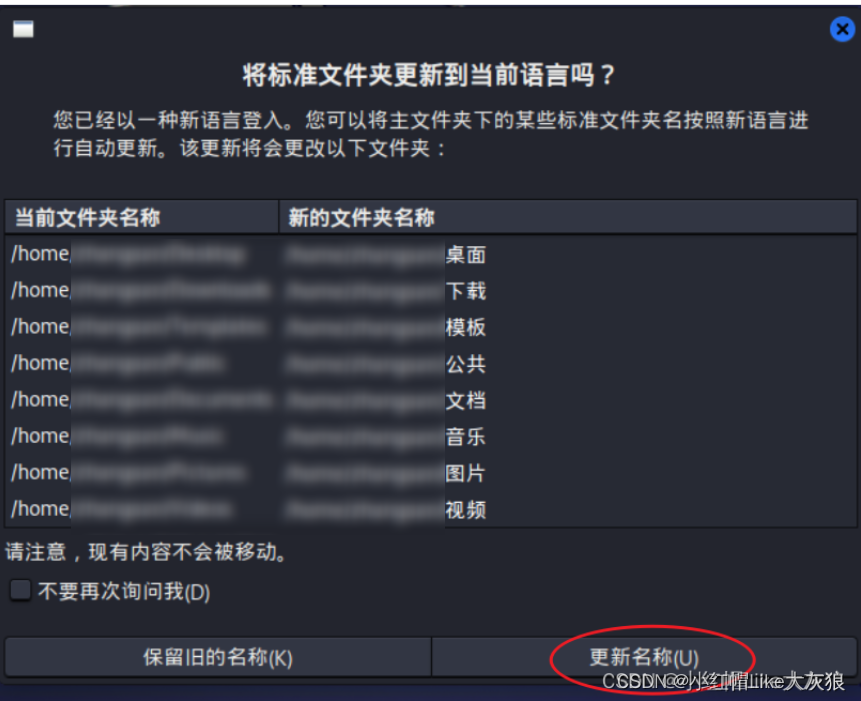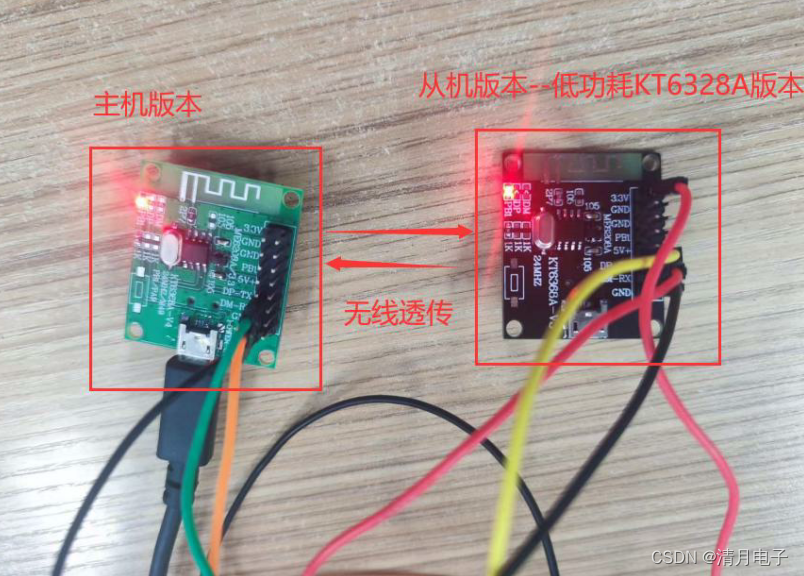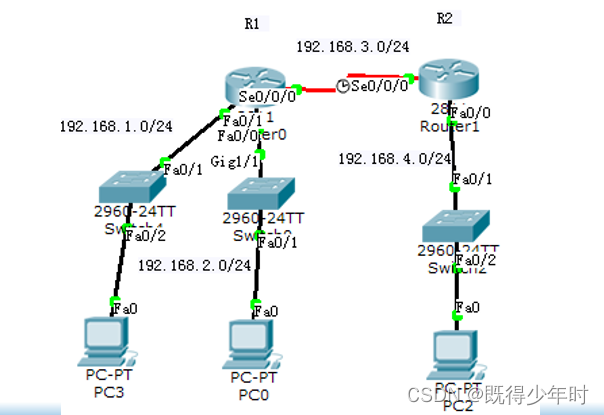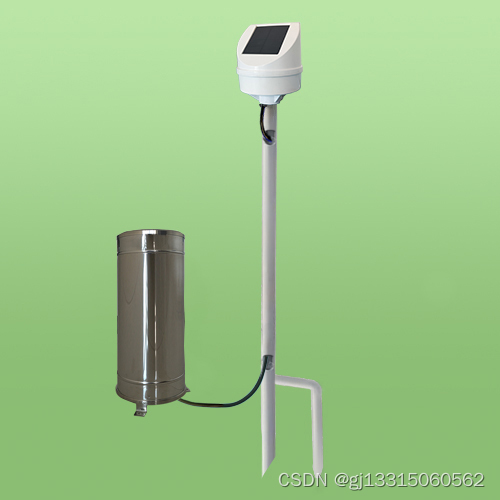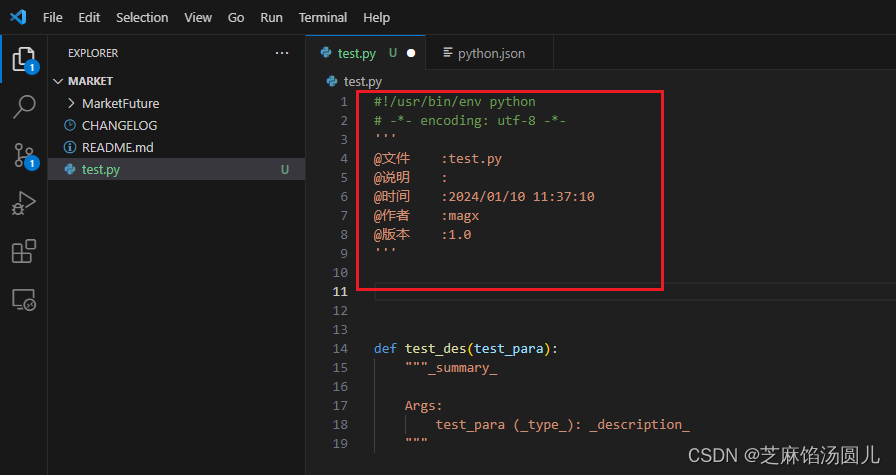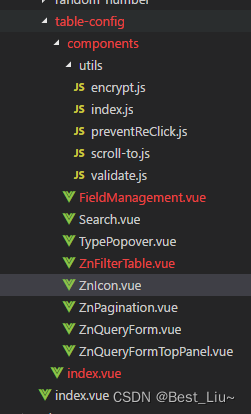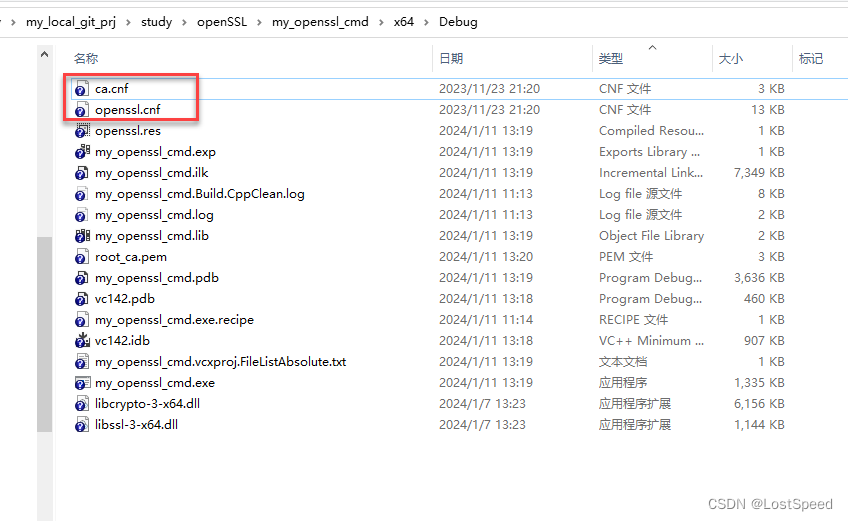一、template模板方法
模板方法是c++的一个特性,可以让你的代码在不指定数据类型的情况下,运行不同的数据类型。
你可以创建模板方法和模板类,本文讨论模板方法。
二、代码
// Includes std::cout (printing) for demo purposes.
#include <iostream>
// Templates are a language feature in C++ that allow you to write code that
// can work with multiple data types, without actually specifying those types.
// In C++, you can create both templated functions and templated classes. We'll
// talk about templated functions in this file.
//模板方法是c++的一个特性,可以让你的代码在不指定数据类型的情况下,运行不同的数据类型。
//你可以创建模板方法和模板类,这个文件讨论模板方法。
// Here is a basic templated function that adds two numbers.
// Syntax note: You will see code with both template<class T> and
// template<typename T>. Although these statements are equivalent, there are
// differences between the class and typename keywords. This blog article covers
// this difference, but you won't need to know this for the class:
// https://mariusbancila.ro/blog/2021/03/15/typename-or-class/
//模板方法,计算两个数字的和
template <typename T>
T add(T a, T b) { return a + b; }
// It is possible to pass multiple type names via templates into functions.
// This function will print both of these values out.
// 传入多个类型的模板方法
template<typename T, typename U>
void print_two_values(T a, U b) {
std::cout << a << " and " << b << std::endl;
}
template<typename T, typename U, typename V>
void print_three_values(T a, U b,V c) {
std::cout << a << " and " << b << " and " << c <<std::endl;
}
template<typename T, typename U, typename V,typename W>
void print_four_values(T a, U b,V c,W d) {
std::cout << a << " and " << b << " and " << d <<std::endl;
}
template<typename T, typename U, typename V,typename W,typename X>
void print_five_values(T a, U b,V c,W d,X e) {
std::cout << a << " and " << b << " and " << e <<std::endl;
}
// It is also possible to create specialized templated functions, that do
// different things for different types. Take the following contrived example,
// which prints the type if its a float type, but just prints hello world for
// all other types.
// 也能根据不通的类型,制定不同的模板方法。
template <typename T>
void print_msg() { std::cout << "Hello world!\n"; }
// Specialized templated function, specialized on the float type.
// 对float类型单独定制
template <>
void print_msg<float>() {
std::cout << "print_msg called with float type!\n";
}
// Lastly, template parameters do not have to be classes. Take this basic (yet
// very contrived) function that takes in a bool as a template parameter and
// does different things to the argument depending on the boolean argument.
// 这个做法不推荐
template <bool T> int add3(int a) {
if (T) {
return a + 3;
}
return a;
}
int main() {
// First, let's see the add function called on both ints and floats.
std::cout << "Printing add<int>(3, 5): " << add<int>(3, 5) << std::endl;
std::cout << "Printing add<float>(2.8, 3.7): " << add<float>(2.8, 3.7)
<< std::endl;
// It is also possible for a templated function to interpret the type of its
// arguments, although if you're a beginner in modern C++, it's preferred you
// don't do this because then you might not be sure of the types being passed
// into your functions.
// 也可以不指定类型,但初学者不建议
std::cout << "Printing add(3, 5): " << add(3, 5) << std::endl;
// Second, let's see the print_two_values function being called with two
// different types.
std::cout << "Printing print_two_values<int, float>(3, 3.2): ";
print_two_values<int, float>(3, 3.2);
print_three_values<int, float, double>(3, 3.2,2.14);
print_four_values<int, float, double,float>(3, 3.2,2.14,2.12);
print_five_values<int, float, double,float,int>(3, 3.2,2.14,2.12,6);
// Let's see what happens when we called print_msg with and without the float
// type being passed in. As expected, the first call to print_msg prints out
// the general output, while the second one, with the float argument,
// recognizes its type parameter and calls the specialized function.
std::cout << "Calling print_msg<int>(): ";
print_msg<int>();
std::cout << "Calling print_msg<float>(): ";
print_msg<float>();
// add3 has the specified behavior for both a true and false templated
// argument, as we can see here.
std::cout << "Printing add3<true>(3): " << add3<true>(3) << std::endl;
std::cout << "Printing add3<false>(3): " << add3<false>(3) << std::endl;
// Lastly, it's important to note that most of these are contrived examples,
// and it is possible to code some of these functions (e.g. passing a boolean
// as an argument instead of a templated argument) without using templates.
// However, in the class, you'll be seeing code similar to this in the
// codebase, so it's good to understand templated functions in these contexts!
// 最后,需要注意的是,以上大多数都是人为的示例,并且有的是可以不使用模板,而是对其中一些函数进行编码
//(例如,将布尔值作为参数而不是模板化参数传递)。但是,海量的代码库中很可能也看到与此类似的代码,因此最好在这些上下文中理解模板化函数!
return 0;
}运行结果
